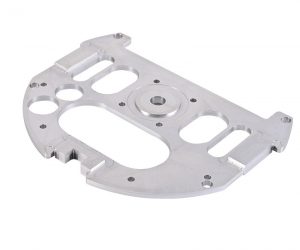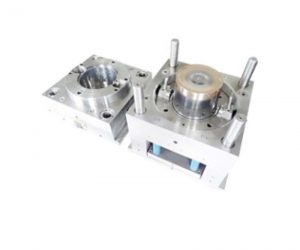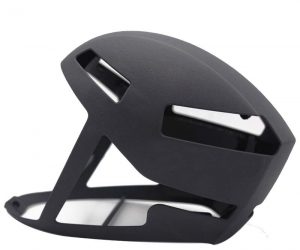Let's explore how adding color to 3D printing is changing how we see and use printed items. It's all about creating bright prototypes and custom designs that are not only pretty but also practical and made just for you.
I. Beyond Monochrome: The Evolving Chromatic Landscape of Additive Manufacturing
The seemingly simple addition of color to 3D printing represents a paradigm shift, transcending mere aesthetic enhancement to fundamentally alter the functional and expressive capabilities of the technology. No longer constrained by the limitations of single-material, monochromatic outputs, additive manufacturing is experiencing a chromatic renaissance. This evolution is driven by the convergence of material science, advanced printing methodologies, and sophisticated software solutions, resulting in a dramatic expansion of design possibilities and applications. The implications extend far beyond mere visual appeal; color now serves as a critical parameter in functional prototyping, personalized product design, and the creation of complex, multi-material constructs. The integration of color signifies a transition from basic additive manufacturing to a more sophisticated, multi-spectral paradigm.
A. The Functional Significance of Chromatic Integration:
The impact of color transcends mere visual ornamentation. In functional prototyping, color-coding of components facilitates assembly and inspection, while in product design, color serves as a powerful communication tool, conveying information about material properties, operational status, or intended use. Furthermore, the ability to incorporate complex color gradients and patterns enables the creation of objects exhibiting unique optical properties, such as light diffusion, refraction, or selective absorption – properties integral to advanced applications in photonics, bioprinting, and customized medical devices. The strategic deployment of color is no longer optional; it's a critical design parameter.
II. Technological Advancements Driving Chromatic Additive Manufacturing
The realization of truly multispectral 3D printing demands a confluence of technological innovations. The limitations of traditional single-extruder systems have been overcome through the development of sophisticated multi-material and multi-color printing techniques.
A. Multi-Material and Multi-Color Printing Architectures:
The evolution from single-material to multi-material printing constitutes a foundational shift. Simultaneous deposition of materials with varying chromatic properties, achieved through techniques such as fused deposition modeling (FDM) with multiple extruders or inkjet-based systems, allows for the creation of complex, spatially-defined color gradients and patterns. Furthermore, the development of novel material formulations, including photochromic and thermochromic inks, introduces dynamic color-changing capabilities, opening up new avenues for interactive and responsive designs. These advancements necessitate sophisticated control systems capable of managing multiple material flows and precise deposition parameters.
B. Chromatic Material Science and Advanced Deposition Techniques:
The development of specialized colorants and pigments compatible with various additive manufacturing processes is crucial. This includes the formulation of inks with enhanced lightfastness, durability, and color saturation. Advanced deposition techniques, such as micro-fluidic control of ink jets and precise layer-by-layer pigment deposition, enable the creation of high-resolution color gradients and intricate patterns. Furthermore, the incorporation of nanoparticles and metamaterials opens up possibilities for the creation of objects with unique optical and electromagnetic properties, controlled through the manipulation of color and material composition.
C. The Algorithmic Control of Chromatic Output: Software's Crucial Role:
The successful implementation of complex chromatic designs relies heavily on sophisticated software solutions. Advanced CAD software packages now incorporate robust color management systems, enabling designers to accurately model and simulate the chromatic output of their designs. These tools allow for the seamless integration of color palettes, gradients, and textures into the 3D model, ensuring accurate translation into the final printed object. Furthermore, the development of algorithms for optimizing material usage and minimizing color transitions enhances the efficiency and precision of the printing process. The software, therefore, acts as the critical bridge between design intent and the realization of a fully chromatic 3D printed object. The future of this field lies in the development of AI-driven design tools capable of autonomously generating optimal chromatic solutions based on specified design parameters and functional requirements.
III. Applications of Chromatic Additive Manufacturing
A. Advanced Artistic and Design Paradigms
The integration of color within 3D printing transcends mere aesthetic enhancement; it constitutes a paradigm shift in creative expression. The capacity to manipulate vibrant hues, complex gradients, and intricate, spatially-resolved patterns unlocks unprecedented artistic freedom. Additive manufacturing, thus empowered, facilitates the realization of avant-garde sculptures and installations exhibiting multi-dimensional chromatic complexity, exceeding the limitations of subtractive techniques. Furthermore, the production of highly individualized, chromatically nuanced objects elevates the concept of personalized artistry to new levels of sophistication, enabling the creation of unique, bespoke artifacts.
B. Prototyping and Visual Communication Optimization
Chromatic 3D printing has revolutionized the prototyping lifecycle, transforming it from a purely functional exercise into a powerful visual communication tool. High-fidelity, multicolored prototypes serve as tangible embodiments of design intent, conveying functionality, aesthetics, and user experience with unparalleled clarity. This enhanced visual communication streamlines decision-making processes, fosters efficient stakeholder collaboration, and accelerates iterative design refinement, ultimately resulting in superior product outcomes aligned with market demands.
C. Functional Chromatic Encoding for Enhanced Usability
The utility of color in 3D printing extends beyond aesthetic considerations; it serves as a critical element in enhancing product functionality. Chromatic encoding, strategically integrated into the design and fabrication process, facilitates intuitive understanding and improved usability. Color-coded mechanical assemblies simplify maintenance and repair, while distinct hues in medical devices enhance identification and reduce operational errors. This approach contributes to the creation of safer, more efficient, and user-friendly products across diverse application domains.
D. Personalized Manufacturing and Identity Expression
The capacity for chromatic customization in 3D printing has fundamentally altered the landscape of personalized product design. Users are empowered to select from extensive color palettes or even define unique chromatic signatures, fostering unprecedented levels of self-expression. This capability extends across diverse applications, from personalized fashion accessories and home décor to bespoke medical implants and prosthetic devices. The resultant products foster a stronger sense of user connection and ownership, reflecting individual preferences and identities.
IV. Advantages of Chromatic Additive Manufacturing
A. Augmented Aesthetic Appeal and Market Positioning
The incorporation of color in 3D printing directly translates to enhanced aesthetic appeal and improved market positioning. The ability to imbue products with vibrant hues, dynamic patterns, and visually arresting designs significantly increases consumer appeal. This heightened visual impact translates to enhanced brand recognition, superior product differentiation, and ultimately, improved market penetration.
B. Differentiation and Brand Identity Enhancement
Chromatic 3D printing offers a powerful means of product differentiation and brand reinforcement. The creation of unique color palettes, gradient effects, and custom design elements allows businesses to establish a distinct visual identity that resonates with target demographics. This strategic use of color is particularly valuable in competitive markets, enabling businesses to cultivate a memorable brand presence and foster stronger customer engagement.
C. Streamlined Production of Complex Geometries
Beyond aesthetic and branding advantages, chromatic integration streamlines the production of complex designs. The seamless incorporation of color directly into the additive manufacturing process eliminates the need for post-processing or assembly steps, thereby enhancing overall production efficiency. This increased efficiency unlocks new possibilities for the creation of intricate, visually striking designs previously unattainable using traditional manufacturing methods.
V. Challenges and Considerations in the Chromatic Advancement of Additive Manufacturing
A. Chromatic Fidelity and Reproducibility: A Persistent Conundrum
The burgeoning adoption of color in additive manufacturing (AM) presents a persistent challenge: achieving consistent and reproducible chromatic outcomes. Material heterogeneity, environmental fluctuations (temperature, humidity), and printer calibration intricacies all contribute to unpredictable color deviations. This variability undermines the precise hue replication crucial for intricate designs and batch-to-batch consistency. Addressing this requires not merely advanced color management systems, but a holistic approach encompassing rigorous quality control protocols, sophisticated spectral characterization techniques, and a deeper mechanistic understanding of the complex interplay between material properties, process parameters (e.g., extrusion pressure, layer height, curing intensity), and the resultant colorimetric response. Furthermore, the development of robust, self-calibrating systems capable of real-time compensation for environmental perturbations is paramount.
B. Economic Constraints: Hardware and Material Acquisition
The integration of color in AM faces significant economic hurdles. Specialized multi-chromatic AM systems and their associated colorants command a premium compared to their monochrome counterparts. This cost differential acts as a substantial barrier to entry for many individuals and small-to-medium enterprises (SMEs). Moreover, the recurring expenses of maintaining specialized hardware components (e.g., print heads, color mixing units) and procuring color-infused materials represent a considerable ongoing operational cost. Overcoming these economic limitations necessitates technological innovations focused on cost reduction, economies of scale leveraging mass production, and the development of more affordable, high-performance colorants and printing methodologies.
C. Technological Limitations and the User Proficiency Gradient
The realization of fully chromatic AM faces inherent technological limitations and a steep user proficiency gradient. While significant advancements have been made in multi-color and multi-material AM capabilities, limitations persist in resolution, accuracy, and speed of color reproduction, particularly concerning complex gradients and fine chromatic details. Furthermore, the adoption of color-enabled AM workflows demands a substantial investment in user training and the acquisition of specialized expertise in software tools, color management techniques, and advanced design principles. Addressing these limitations necessitates further technological refinement, coupled with comprehensive, modular training programs designed to bridge the knowledge gap and empower a wider user base.
VI. Applications and Case Studies: A Multifaceted Technological Revolution
A. Transformative Applications in the Apparel and Footwear Sectors
The integration of color in AM has profoundly impacted the apparel and footwear industries. The ability to create intricate, chromatically nuanced designs has unlocked unprecedented possibilities in personalized fashion and wearable technology. This extends from the fabrication of bespoke footwear and accessories with complex color gradients and textures to the creation of avant-garde apparel exhibiting intricate, multi-material compositions. The resulting products redefine aesthetic boundaries, seamlessly blending form, function, and visual expression.
B. Revolutionizing Product Visualization and Marketing Strategies
Color-enabled AM has revolutionized product visualization and marketing. The generation of highly realistic, chromatically accurate prototypes and samples enhances the customer experience, both online and in physical retail environments. This improved product visualization facilitates more informed consumer decision-making and empowers more effective marketing campaigns through visually compelling, true-to-life representations of products. The impact on consumer engagement and brand loyalty is potentially transformative.
C. Expanding Horizons: Educational and Biomedical Applications
The versatility of color-enabled AM extends beyond commercial applications, impacting education and biomedicine. In education, vibrant, chromatically rich 3D-printed models enhance student engagement and comprehension of complex concepts. In biomedicine, color-infused anatomical models and surgical guides improve visualization, communication, and treatment planning, ultimately benefitting patient outcomes.
D. Artistic Expression: A New Medium for Creative Exploration
The artistic applications of color in AM are particularly compelling. Artists and designers are utilizing this technology to create captivating large-scale installations, intricate sculptures, and objets d'art. The integration of vibrant hues, gradients, and complex patterns pushes creative boundaries, resulting in breathtaking works that challenge perceptions and inspire new ways of experiencing art. These artistic explorations showcase the transformative potential of color-enabled AM within the creative sphere.
VII. Future Prospects and Developments: A Bifurcation of Pathways
A. Advanced Chromatic Additive Manufacturing: Technological Singularities
The trajectory of 3D printing's chromatic evolution is characterized by a confluence of disruptive technologies, each possessing the potential to redefine the landscape. Multi-material extrusion, no longer a mere additive process, is evolving into a sophisticated, spatially-resolved material deposition system capable of generating complex, gradient-based color profiles with sub-voxel precision. High-resolution inkjet methodologies, leveraging advancements in piezoelectric actuation and novel ink formulations, are pushing the boundaries of chromatic fidelity, approaching photorealistic rendering capabilities. Furthermore, the emergence of quantum dot-based color reproduction promises a paradigm shift, offering unprecedented color gamuts and luminance control, potentially surpassing the limitations of conventional pigment-based systems. Finally, the integration of dynamic chromogenic materials, responsive to external stimuli such as light, temperature, or electric fields, introduces an entirely new dimension of interactivity and adaptive coloration, blurring the lines between static object and dynamic display. These advancements are not isolated events; their synergistic interplay will propel additive manufacturing into an era of unprecedented chromatic complexity.
B. Disruptive Innovation and the Redefinition of Manufacturing Paradigms
The integration of advanced color capabilities in 3D printing constitutes a profound disruption across multiple sectors. Mass customization, previously constrained by economic and logistical limitations, becomes readily achievable, enabling personalized product design on an unprecedented scale. The democratization of artistic expression is equally significant, empowering individuals and small-scale enterprises to compete with established players and fostering the emergence of novel creative ecosystems. This disruption, however, is not without its challenges. Existing manufacturing infrastructure and business models face significant pressure to adapt, necessitating a fundamental re-evaluation of production processes and supply chains. The potential for obsolescence necessitates proactive strategic adaptation from established players, while simultaneously presenting opportunities for agile, innovative enterprises.
C. Sustainability and the Imperative of Eco-Conscious Chromatic Additive Manufacturing
The long-term viability of color-infused 3D printing hinges on the adoption of sustainable practices and materials. The development of bio-based pigments, biodegradable polymers, and non-toxic solvents is paramount. Moreover, the optimization of energy consumption throughout the printing process, from material synthesis to final curing, is crucial. Life-cycle assessments (LCAs) must become integral to material selection and process optimization, ensuring that the environmental impact of color additive manufacturing is minimized. The pursuit of closed-loop material cycles, facilitating material reuse and recycling, represents a critical avenue for mitigating the environmental footprint of this transformative technology. Failure to address these sustainability concerns risks undermining the long-term acceptance and widespread adoption of color 3D printing.
VIII. Conclusion: A Chromatic Revolution in Additive Manufacturing
The integration of color into 3D printing represents a pivotal moment in the evolution of additive manufacturing. The ability to seamlessly integrate vibrant hues, intricate patterns, and dynamic color-changing capabilities transcends mere aesthetic enhancement; it unlocks new frontiers in product design, functionality, and user experience. While challenges remain – particularly concerning cost, consistency, and workflow optimization – the convergence of technological advancements and a growing emphasis on sustainability positions color 3D printing for exponential growth and widespread adoption. The future is not merely colorful; it is chromatically complex, dynamically responsive, and sustainably responsible. The chromatic revolution in additive manufacturing has begun.


